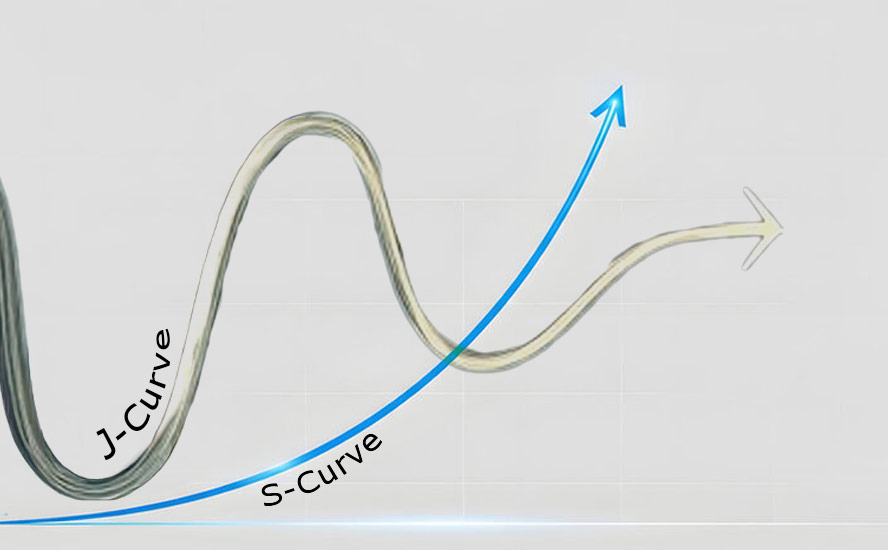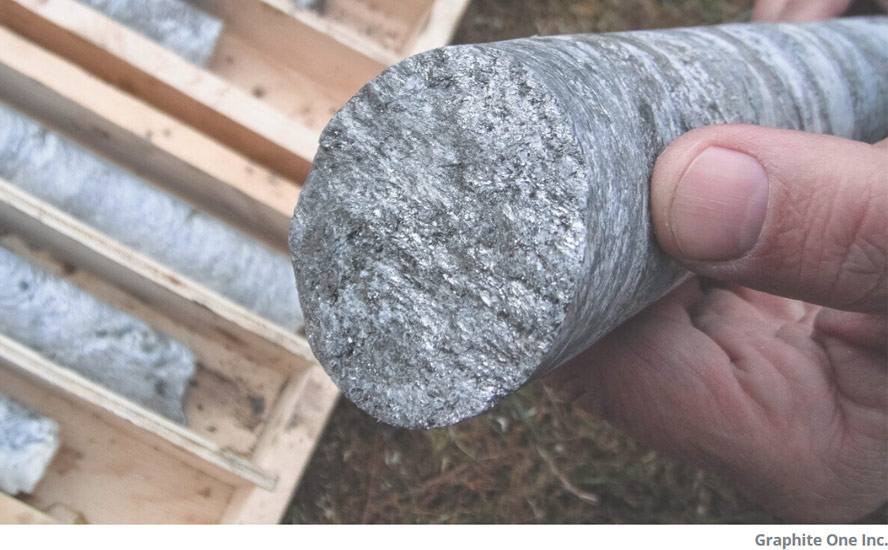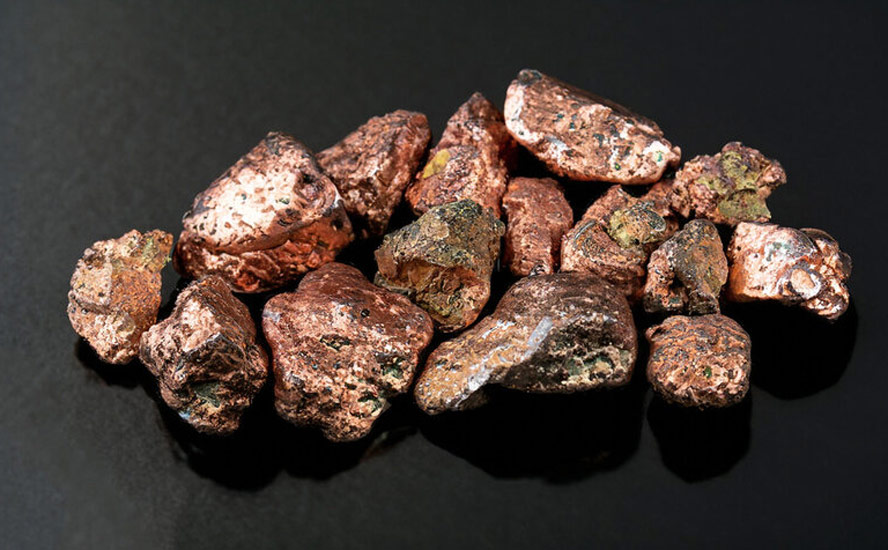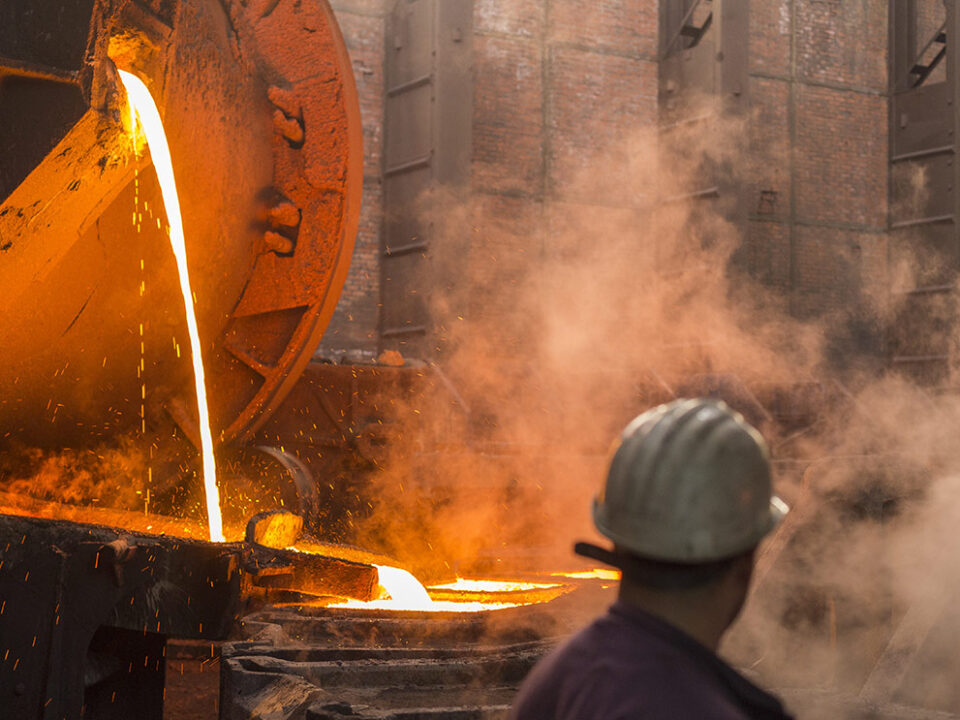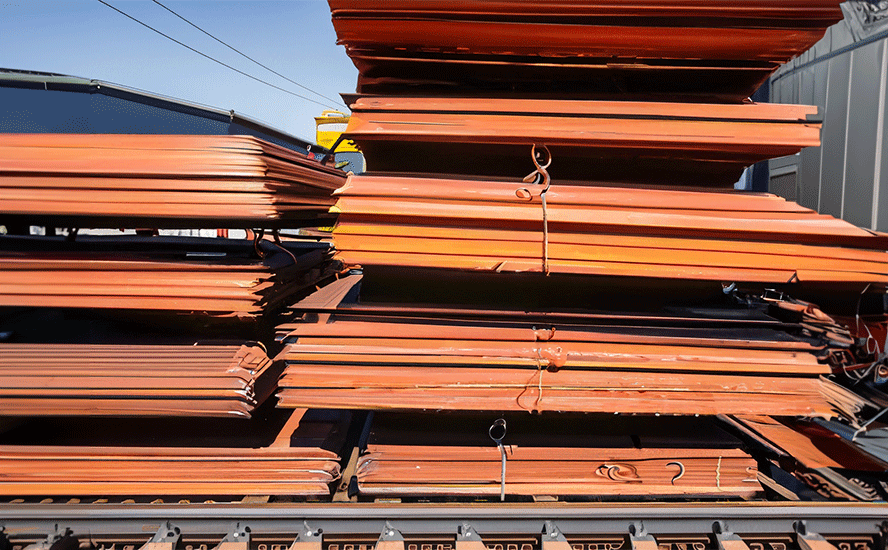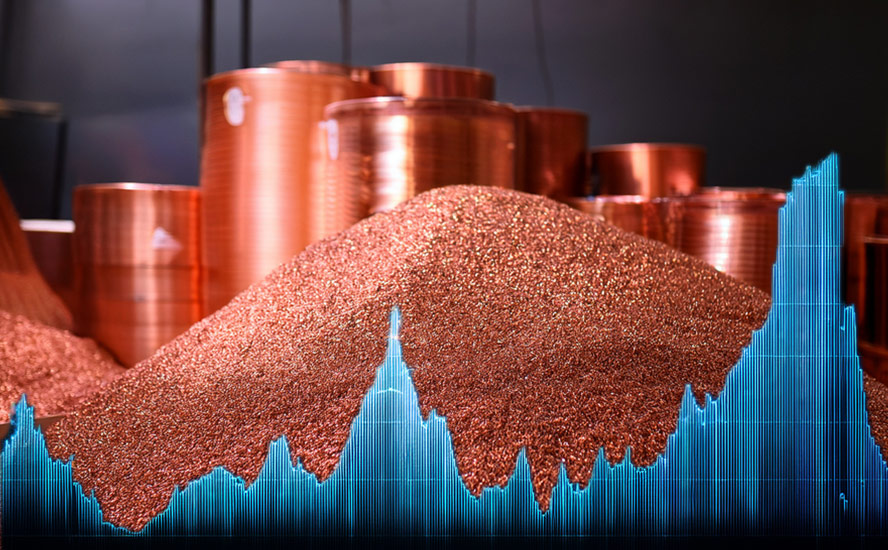Bigger spending on EV batteries means more nickel has to be mined
2021.11.13
A story to follow over the next decade is how the clean energy transition would dictate the global markets.
According to the latest Reuters analysis, automakers worldwide are planning to spend more than half a trillion dollars on electric vehicles and batteries through 2030.
This represents a considerable increase over the $300 billion figure given by a similar analysis just less than 3 years ago.
Other surveys have also come up with different, but still significant, spending projections. In June, consulting firm AlixPartners said auto industry investments in electric vehicles would reach $330 billion by 2025.

Last year, all global automakers combined spent nearly $225 billion on capital expenditures and research and development, according to AlixPartners’ estimates.
As the world’s biggest EV manufacturer, Tesla has already put in motion plans to boost production with new multibillion-dollar “gigafactories” near Berlin and Austin.
In China, the top EV market globally, automakers have announced well over $100 billion in investment targets over the next decade. Japanese automakers have also committed $40 billion in spending.
European carmakers are also rising to the challenge, led by Germany’s VW Group, which is set to lead the industry with more than $110 billion in investment commitments through 2030.
Furthermore, the Reuters study pointed out these global investments do not include the “tens of billions being invested in additional production capacity by the world’s largest battery companies, many in cooperation with their automaker partners.”
Everything considered, the expected surge in EV investments would cause a ripple effect further down the supply chain, including a key part of the energy transition: battery metals.
Nickel Shortfall
Among the metals that are set for a decade-long demand surge, one that would require the industry to pay special attention to is nickel.
While only 10% of the world’s nickel currently ends up in the battery supply chain, the growth in EV demand and additional investments are expected to completely transform the market.
Bank of America forecasts that 690,000 tonnes of nickel would be needed by 2025, based on its estimate of 13.6 million EVs sold that year. That represents nearly the entire mined nickel supply of Indonesia, the world’s top biggest producer, which in 2020 outputted 760,000 tonnes, out of the 2.5Mt total.
If we take that number out and apply it to EVs, the mining industry has to find another 690,000 tonnes to supply all of nickel’s other uses, the primary one being stainless steel.
Nickel sulfate powder made from nickel sulfide ore, is a crucial ingredient in cathode formulation for lithium-ion batteries needed to propel electric vehicles.
Nickel is popular with EV battery-makers because it provides the energy density that gives the battery its power and range. Increasing the amount of nickel in a battery cathode ups its power and range.
The rate of nickel consumption for EV battery manufacturing is set to outpace both lithium and cobalt over the next decade, with an average annual growth rate of 29%, according to Fitch Solutions.
A recent report prepared by Wood Mackenzie in advance of COP26 estimates that global lithium-ion battery capacity is set to double in just two years, with storage and EV application to drive battery demand to 2.3TWh by the end of the decade.
However, setting ambitious climate targets would be fruitless without sufficient supply of metals to accelerate the decarbonization process.
“The energy transition starts and ends with metals,” according to WoodMac, which specifically lists nickel as one of five minerals (copper, cobalt, lithium and aluminum being the others) that are at critical volumes.
The Edinburgh-based research firm questions the availability and reliability of the world’s nickel supply with the prospect of a significant spike in demand.
Based on WoodMac’s forecast, nickel demand is expected to double from 2.4Mt today to 4.9Mt in 2040, which, at the current rate of mine production, would leave us with a severe supply shortfall.
Just how much more nickel is required to achieve net zero by 2050, though, depends on the pathway on which the energy transition takes place.
Based on the AET-2 scenario, which limits global warming to 2C on pre-industrial levels by the end of this century, WoodMac estimates that an additional 1.7Mt of nickel will be needed (see below). Other metals, too, are facing supply challenges.

Overall, WoodMac finds that the capex for base metals mining projects alone needs to quadruple to about $2 trillion to achieve an accelerated energy transition.
According to Julian Kettle, senior vice president and vice chairman of metals & mining at WoodMac, the mining industry has been underinvesting even for a slower energy transition.
Those in the industry are also well aware of this. Glencore CEO Ivan Glasenberg previously said nickel supplies need to grow by an additional 250,000 tonnes a year, projecting that annual nickel demand will rise from 2.5Mt currently to 9.2Mt over the next few decades.
But mining companies can’t simply flip a switch and turn on that much new nickel. Decades of underinvestment means there have been very few large-scale greenfield nickel sulfide discoveries.
Where is the list of mining projects to come on stream to achieve the theoretical demand? Remember, on average it takes well over 10 years for a new mine to be discovered and developed.
Historically, most nickel was produced from sulfide ores, including the giant (>10 million tonnes) Sudbury deposits in Ontario, Norilsk in Russia and the Bushveld Complex in South Africa, known for its platinum group elements (PGEs).

However, existing sulfide mines are becoming depleted, and are not being replaced, which has changed the geographical weighting of nickel production.
With existing sulfide mines becoming depleted nickel miners are having to go to the lower-quality, but more expensive to process, as well as more polluting nickel laterites such as found in the Philippines, Indonesia and New Caledonia.
This obviously defeats the purpose of what the world is trying to achieve. Soon enough, the mining industry will need to seek out new sulfide deposits from which the extraction of high-grade nickel needed for battery chemistries is economically, technically and environmentally feasible.
And while the pickings are slim, history suggests the best places to look are those with proven sulfide mine production.
Given Canada’s rich mining history and status as a top 5 nickel producer globally, we believe this is where much of the high-grade nickel used in EV batteries could come from.
The largest nickel deposits are found in the Thompson Nickel Belt in Manitoba, Ontario’s Sudbury Basin and the Ungava Peninsula in Quebec. Of the three, most of Canada’s nickel supply currently comes from Sudbury, where Brazil’s Vale is operating one of the world’s biggest nickel mines. In fact, many describe Sudbury as being the “nickel capital of the world”.
As we’ve previously discussed, Ontario is becoming a major hunting ground for the big-name miners looking to boost their nickel profile, evidenced by BHP and Wyloo Metals’ months-long battle to acquire Noront Resources and its high-grade Eagle’s Nest deposit in the Ring of Fire area.
As the urgency to mine more nickel grows, other sulfide projects in and around this region could soon make the headlines. In this article, we have identified two emerging nickel explorers with potential to supply the critical raw materials to fuel the energy transition.
Palladium One Mining
Like Sudbury, Vale’s Voisey’s Bay operation in Labrador has long been one of the biggest nickel producers globally.
One project with resemblance of a Voisey-style nickel-copper-PGE mineralization is the Tyko project near Marathon, Ontario, being developed by Palladium One (TSXV: PDM) (FSE: 7N11) (OTC: NKORF).
The project covers approximately 24,500 hectares of land within the highly prospective Mid-Continent Rift nickel province, including over 7,000 hectares of the mafic-ultramafic Bulldozer intrusion, which has seen virtually no geological mapping nor exploration.

The Archean-aged mafic-ultramafic intrusion is rich in nickel, containing twice as much the battery metal as copper, and equal amounts of platinum and palladium.
According to the company, the high tenor of the sulfide minerals suggests a valuable concentrate could be produced, and that even if the sulfides are disseminated, the deposit could still be economic.
Drilling in 2020 primarily focused on the Smoke Lake target, an EM anomaly identified through geophysical surveying. Magnetic survey undertaken shortly before drilling helped to refine the anomaly, resulting in the successful discovery of massive magmatic sulfides.
The first discovery of massive sulfide mineralization at Tyko was confirmed in January, when the company announced drill intercepts from massive magmatic sulfide of up to 9.9% nickel equivalent. Subsequent drill results reported from the 2020 program were a resounding success, confirming the high-grade nature of the deposit.
A second-phase, 2,000m drill program was initiated in April to follow up on these high-grade hits. The assays to date have been excellent, including massive magmatic sulfide intercepts grading up to 10.2% nickel equivalent, demonstrating a robust mineralization spread over a distance of at least 18 km.
In addition to the high-grade Smoke Lake zone, Palladium One believes there are new zones of nickel-copper mineralization yet to be discovered.
Preliminary results of the recently completed airborne EM survey have identified as many as four significant multi-line EM anomalies on the Tyko copper-nickel project, which further support this hypothesis.
Of particular interest are two anomalies in the Bulldozer Intrusion. These are the first EM anomalies identified in this large mafic-ultramafic intrusion and hint at potentially large tonnage targets.
Assay results from the Phase 2 drill program at Smoke Lake are still pending.
Renforth Resources
Meanwhile, another project we are actively monitoring is the Surimeau polymetallic property held by Renforth Resources (CSE: RFR) (OTCQB: RFHRF) (FSE: 9RR), located in the neighboring province of Quebec.
This 260 sqkm brownfield property hosts several target areas for gold and industrial metals (nickel, copper, zinc, cobalt, silver) located south of the Cadillac Break, a major regional gold structure in Quebec.
Both the gold and battery metal targets on the property are supported by historic findings and Renforth’s follow-up exploration.
Exploration focus is currently placed on the sulfide nickel rich VMS targets, in particular the Victoria West prospect, which was the site of recent drilling by the company over the past year (see map below).

The Victoria target was last explored in the 1990s by LAC Minerals looking for gold, though it was later determined by LAC and previous operators that nickel, zinc and copper, plus a few more minerals, are also present. This finding was later validated by Renforth’s initial fieldwork.
According to Renforth, information gleaned from drilling and trenching the Victoria West target, along with surface sampling, create an area of interest that includes about 5 km of strike on the western end of a 20 km magnetic anomaly.
The company interprets this anomaly to be a nickel-bearing ultramafic sequence unit, which occurs alongside, and is intermingled with, VMS-style copper-zinc mineralization.
In fact, Renforth considers the style of mineralization to be an “Outokumpu-like” occurrence, referring to a district in eastern Finland known for several unconventional sulfide deposits with economic grades of copper, zinc, nickel, cobalt, silver and gold.
About 50 million tonnes of ore averaging 2.8% Cu, 1% Zn and 0.2% Co, along with traces of Ni and Au, were mined from three deposits between 1913-1988.
Renforth’s first drilling at Surimeau occurred in October 2020, with 2.5 short holes completed.
A total of 15 holes for 3,456m were completed during the 2021 program, drilling off 2.2 km of strike within the approximately 5 km long Victoria West target. Another four holes totaling about 1,000m were drilled this summer; these holes delivered visible sulfides in the core.
Assays for the 21 holes drilled at Victoria West all came in this week, with each hole hitting mineralization as expected, and the four deeper holes even demonstrating an increase in grade.
While still at a very early stage, the company considers the extent of these findings, plus other known targets and unexplored prospective ground, warrant further exploration on this 260 sqkm property.
Victoria West is only one of six polymetallic target areas on the Surimeau property historically documented as hosting mineralization.
The latest to be prospected is the Huston area, located about 18 km northwest of the Victoria West area. This area is almost entirely unexplored with the exception of a limited drill program in the general area by Hecla in the 1980s, which focused on gold.
Results of this summer’s prospecting from the southwestern part of the area gave the first ever documented nickel occurrence at Huston (Renforth recently reported a grab sample assaying 1.9% Ni, 1.38% Cu, 1170 ppm Co and 4 g/t Ag). Follow-up work is planned by the company’s geological team for the fall season.
Potentially, more drilling could occur during the last three months of the year at Victoria West, Huston and Malartic West, another important target that is prospective for copper and silver.
Conclusion
Reflecting the critical condition of the global nickel market is the metal’s price.
Nickel prices in London recently hit a 7-year high amid concerns of a depleting supply of the key industrial metal. Chinese nickel contracts are also coming off all-time highs, with refined nickel inventories in Shanghai hovering near record lows for weeks.
Global miners have been experiencing significant output declines. Vale SA saw its Q3 output fall 22% year-on-year, and as a result, reduced its 2021 production guidance.
Russia’s Nornickel, the world’s largest refined nickel producer, also reported lower output in Q3, with production in January-September falling 23% year-on-year.
While a global supply shortage looms over the nickel market, the demand pressure on decarbonization metals will continue to pile up. This bodes well not only for further price rallies, but also those that are exploring for and discovering the next nickel deposits to serve the EV revolution.
Richard (Rick) Mills
aheadoftheherd.com
subscribe to my free newsletter
Legal Notice / Disclaimer
Ahead of the Herd newsletter, aheadoftheherd.com, hereafter known as AOTH.
Please read the entire Disclaimer carefully before you use this website or read the newsletter. If you do not agree to all the AOTH/Richard Mills Disclaimer, do not access/read this website/newsletter/article, or any of its pages. By reading/using this AOTH/Richard Mills website/newsletter/article, and whether you actually read this Disclaimer, you are deemed to have accepted it.
Any AOTH/Richard Mills document is not, and should not be, construed as an offer to sell or the solicitation of an offer to purchase or subscribe for any investment.
AOTH/Richard Mills has based this document on information obtained from sources he believes to be reliable, but which has not been independently verified.
AOTH/Richard Mills makes no guarantee, representation or warranty and accepts no responsibility or liability as to its accuracy or completeness.
Expressions of opinion are those of AOTH/Richard Mills only and are subject to change without notice.
AOTH/Richard Mills assumes no warranty, liability or guarantee for the current relevance, correctness or completeness of any information provided within this Report and will not be held liable for the consequence of reliance upon any opinion or statement contained herein or any omission.
Furthermore, AOTH/Richard Mills assumes no liability for any direct or indirect loss or damage for lost profit, which you may incur as a result of the use and existence of the information provided within this AOTH/Richard Mills Report.
You agree that by reading AOTH/Richard Mills articles, you are acting at your OWN RISK. In no event should AOTH/Richard Mills liable for any direct or indirect trading losses caused by any information contained in AOTH/Richard Mills articles. Information in AOTH/Richard Mills articles is not an offer to sell or a solicitation of an offer to buy any security. AOTH/Richard Mills is not suggesting the transacting of any financial instruments.
Our publications are not a recommendation to buy or sell a security – no information posted on this site is to be considered investment advice or a recommendation to do anything involving finance or money aside from performing your own due diligence and consulting with your personal registered broker/financial advisor.
AOTH/Richard Mills recommends that before investing in any securities, you consult with a professional financial planner or advisor, and that you should conduct a complete and independent investigation before investing in any security after prudent consideration of all pertinent risks.
Ahead of the Herd is not a registered broker, dealer, analyst, or advisor. We hold no investment licenses and may not sell, offer to sell, or offer to buy any security.
Richard owns shares of Renforth Resources (CSE: RFR). RFR is a paid advertiser on Richard’s site aheadoftheherd.com
Richard does not own shares of Palladium One (TSXV: PDM). PDM is a paid advertiser on Richard’s site aheadoftheherd.com
Legal Notice / Disclaimer
Ahead of the Herd newsletter, aheadoftheherd.com, hereafter known as AOTH.Please read the entire Disclaimer carefully before you use this website or read the newsletter. If you do not agree to all the AOTH/Richard Mills Disclaimer, do not access/read this website/newsletter/article, or any of its pages. By reading/using this AOTH/Richard Mills website/newsletter/article, and whether you actually read this Disclaimer, you are deemed to have accepted it.












